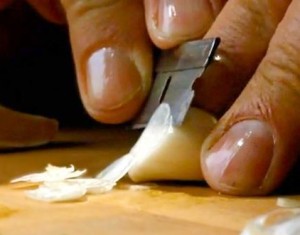 Industry veterans know that profit margins for most restaurants are thinner than Pauli’s razor-sliced garlic in Goodfellas.
Industry veterans know that profit margins for most restaurants are thinner than Pauli’s razor-sliced garlic in Goodfellas.
Finding creative ways to save money and cut costs can be the difference between shutdown and survival for some businesses.
Usually the best avenues for saving money and cutting costs are somewhere within the food and labor budgets, if only because they make up the biggest parts of operations costs.
According to an Operations Report by the National Restaurant Association, about two-thirds of restaurant costs go toward food and labor, regardless of the restaurant’s service or price level.
In this two-part post, the Restaurant Technology Guys will provide some options for cost cutting in the food and labor segments. First up: controlling food costs.
Restaurant Technology Guys | Saving Money & Cutting Costs Part 1: Food
Control & Verify Vendor Pricing
Reviewing food costs starts with the source – in your case, the vendors that supply your restaurant.
It’s your responsibility to make sure that everything vendors bring into your restaurant arrives in the amount and at the price that was previously agreed upon. For example, some vendors have been known to increase item prices between order placement and shipment to your location. This should be checked on each and every order.
One powerful way to control purchasing costs is by using a bidding system for your purchases, rather than just going with someone you know or have worked with in the past. Chef’s Resources has an in-depth article on controlling food costs through purchasing habits, which includes this list of things to remember if you plan to institute a bidding system:
- You should have 2-4 vendors bidding on your business for items such as produce, beef and fish
- Even if you have a contractual broad line vendor agreement, keep them honest by accepting bids from competitors
- DO NOT buy based upon the lowest price. Buy according to best quality at best price
- If you have to choose between quality and price, choose quality (if it is measurable)
- Purchase according to your demographics and budget. You won’t purchase Wagyu beef to serve at Denny’s
- If no one is bidding on your product purchases, you are paying the highest price
Track Vendor Credits
If a shipment of products shows up damaged or otherwise unusable, those products should not be invoiced. You’ll need to make sure sure that the vendors issue credits for the products you did not receive.
Too often, drivers don’t provide information on damaged or refused products when they return to the warehouse, and the product stays on your invoice. Paying for these wasted items is (almost) literally throwing money away.
Check Portion Sizes
 Once the food is finally in your kitchen or bar, using more product than each menu item calls for also reduces profits. Sticking to a standard portion size for every dish not only maintains quality, but reduces cost overages.
Once the food is finally in your kitchen or bar, using more product than each menu item calls for also reduces profits. Sticking to a standard portion size for every dish not only maintains quality, but reduces cost overages.
Putting an end to over portioning is an excellent cost-saving opportunity, but you’ll need to uncover where the problem is first. Is your kitchen staff unaware of the correct portion sizes, or using lazy technique? Either way, a refresher on preparation and portion standards should go a long way toward correcting this problem.
The goal is to use the correct portion sizes each time, which will ensure that your restaurant is providing the proper amount of product for the price.
